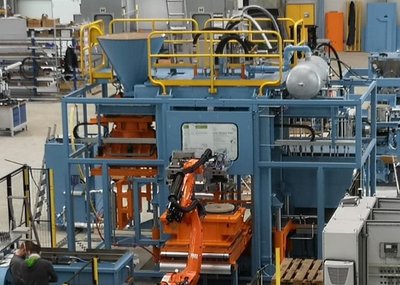In core making production, efficient gas heating is crucial for optimizing the core production outcomes across various processes, especially traditional cold box and inorganic methods. This often involves a connected series of independent gas heating units, which result in energy inefficiency and environmental concerns. Mingzhi Technology seeks to address these challenges through innovative gas heating solutions, aiming to enhance operational efficiency, environmental sustainability, and safety.
Focusing on the conventional cold box method, core making machine relies on two separate and connected gas heating units, including air and amine-based product gas heaters, connected by pipelines to form a gas generator which emits high temperature gas. This is conducted through a lengthy series of pipelines into the blow hood (blow plate), before finally reaching the core box to complete core curing. However, this setup leads to significant heat loss due to the lengthy transmission distance, resulting in suboptimal production conditions with respect to the catalyst consumed. Test data shows that when the set temperature of the air heater is 150°C and that of the amine-based product gas heater is 120°C, the inlet temperature of the blow hood (blow plate) can only reach 70°C (heat energy loss around 50%), leading to a series of suboptimal conditions in core production. The low temperature at the inlet of the blow hood (blow plate) creates a poor amine-based product gasification effect, therefore extended blowing time is required for core curing, resulting in low core production efficiency. Countering this, requires increasing the amount of amine-based product, which leads to significant material waste. Furthermore, to achieve a constant high gas temperature, the heater requires greater energy consumption, which is in opposition to energy conservation and environmental protection targets. Additionally, this consequent consumption of amine-based product generates a high concentration of gas emission output creating unhealthy operating conditions.














